Back to: Cardiovascular
Cardiac Physiology
Heart Basics
The cardiovascular system is mainly concerned with maintaining a sufficient arterial blood pressure, in order to ensure adequate supply of oxygen and glucose to vital organs like the brain.
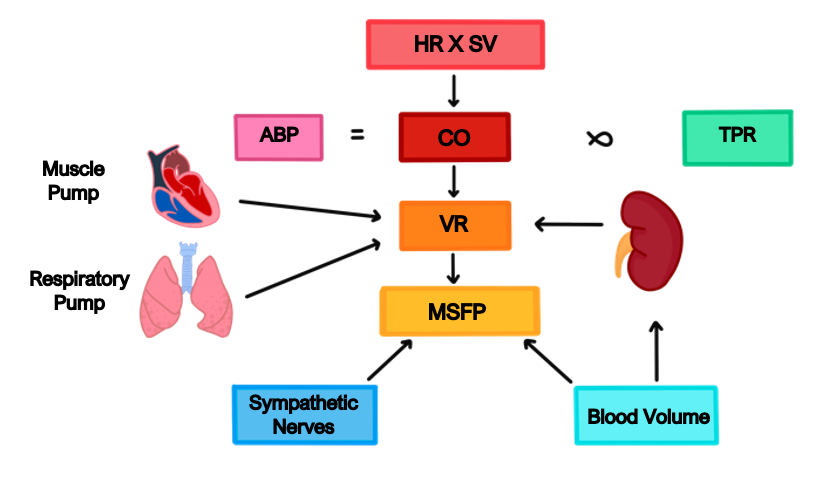
There are many factors which affect arterial blood pressure:
The Heart
Cardiac Action potential:
Phase 0:
This is the Na current. It is produced by voltage-gated Na+ channels which give a rapid phase of depolarisation
Phase 1:
This transient outward current is produced by voltage- gated K+ channels which activate rapidly and inactivate immediately after.
Phase 2:
This long current is mediated mainly by L-type Ca2+ channels, which allow an influx of calcium.
– It opposes an outward K+ current which is mediated by hERG delayed rectifier potassium channels.
Phase 3:
This slow current shows delayed rectifier properties and little activation. It is an outward K+ current.
Excitation-contraction coupling is achieved as depolarisation opens L-type calcium channels
– Ca2+ enters and binds troponin C, causing a conformational change that pulls tropomyosin into actin groove.
– This allows actin-myosin bridges to form, allowing ventricular muscle contraction.
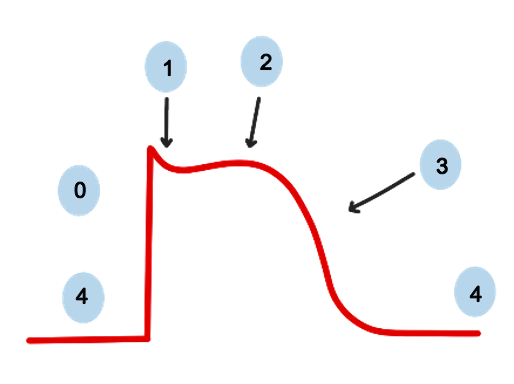
The cardiac contraction is heavily dependent on external calcium, rather than just Ca2+ within the sarcoplasmic reticulum.
– The Ca2+ concentration is kept in order by the NCX (sodium-calcium exchanger), which removes calcium that has entered through L-type calcium channels.
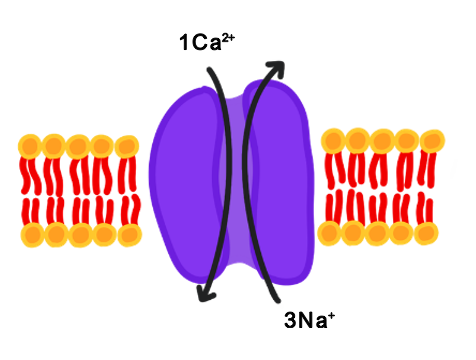
The Pacemaker
The heart does not need any nervous input to initiate the action potential.
– Instead it is generated automatically generated by the nodal tissues including the SAN and AVN.
– These areas do not have a stable resting potential.
– Instead, it gradually drifts up becoming more positive until the gating threshold potential for voltage gated Ca2+ channels is reached.
– This If current is produced by HCN channels – hyperpolarization cyclic-nucleotide gated channels, which are permeable to both Na and K+.
– These open after hyperpolarization and cAMP binding.
Cell hyperpolarization –> Na+ enters through HCN channels giving depolarisation –> T-type Ca2+ channels open –> threshold for L-type channels –> cardiac action potential –> K+ channels repolarize membrane.
Control of heart rate and contractility
Although the heart rate requires no nervous input to generate the heartbeat, the heart rate can be modulated by nerves and hormones.
– This is centrally controlled through baroreceptors and chemoreceptors, which measure pressure and carbon dioxide concentration in the blood
Baroreceptors:
– These can be split into high- and low-pressure sensors
– They respond to stretch within the local vessel wall
– They signal to the NTS (nucleus of the solitary tract) to stimulate the cardio-inhibitory area and inhibit the vasomotor area increasing parasympathetic tone
Chemoreceptors:
– These contain oxygen sensitive sells which are stimulated by a decrease in pH, pO2 or increased CO2
– They cause a reduction in flow to non-vital tissue and protect flow to the heart and brain.
Effects of catecholamines (Sympathetic):
– Adrenaline is released from the adrenal medulla
–> Increased cAMP shifts the membrane potential to more positive levels, increasing heart rate
–> Sensitization of L-type calcium channels gives stronger force of contraction
–> Enhancement of delayed type rectifier channels gives quicker repolarization and faster heart rate.
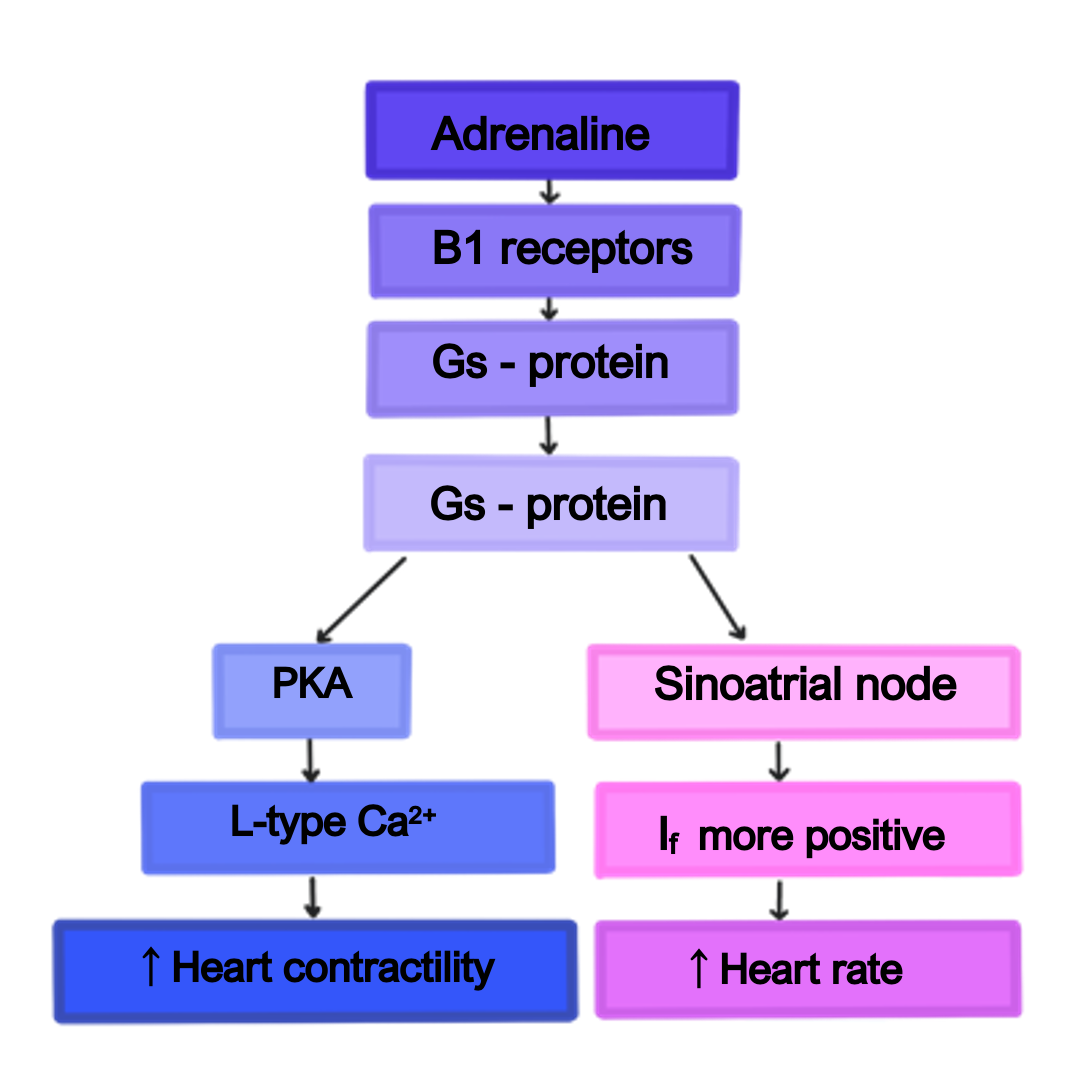
Effects of acetylcholine (Parasympathetic):
– ACh binds muscarinic M2 channels which are mainly present at the SAN.
–> Decreases cAMP slowing the heart rate down –> Less PKA phosphorylation of L-type calcium channels, reducing entry and force of contraction
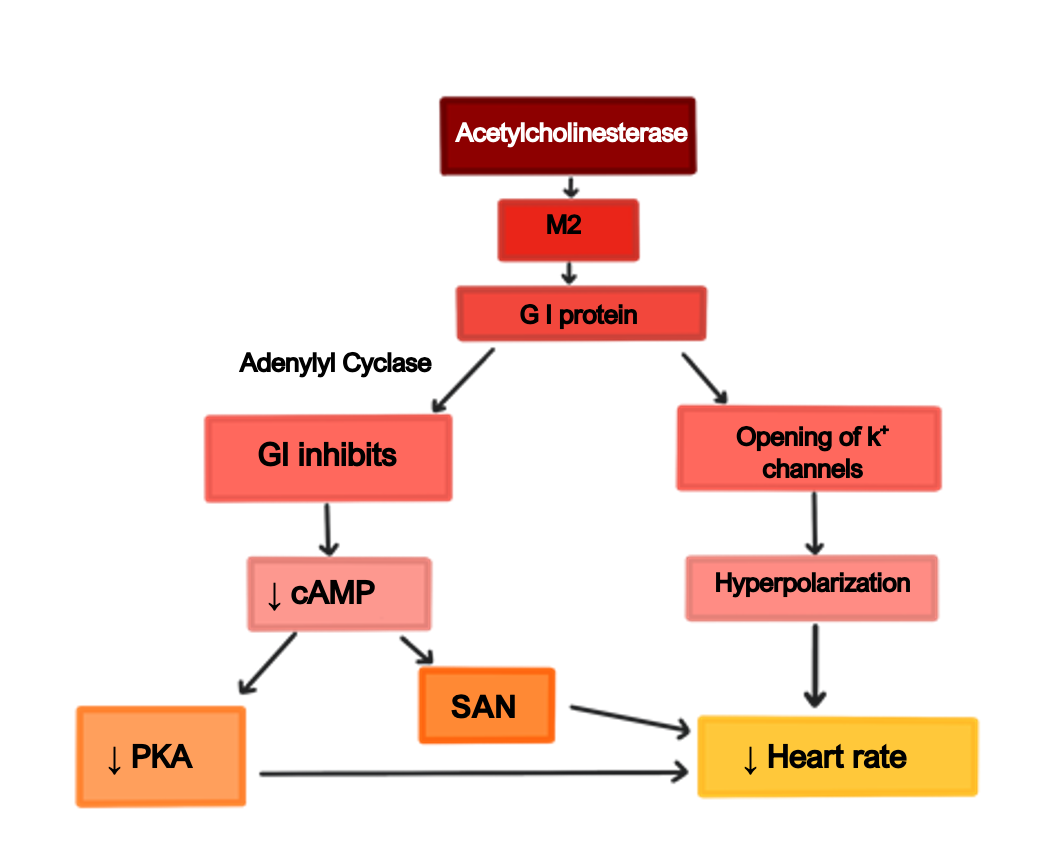
In this way, the heart is able to modulate the cardiac output to ensure that it matches venous return.
– Apart from the external modulation, it has an intrinsic mechanism to do this, known as the Starling law of the heart.
– Starling law = this is where increased venous return causing increased right atrial pressure leads to an increase in muscle fibre contractility to increase the force of contraction raising cardiac output.
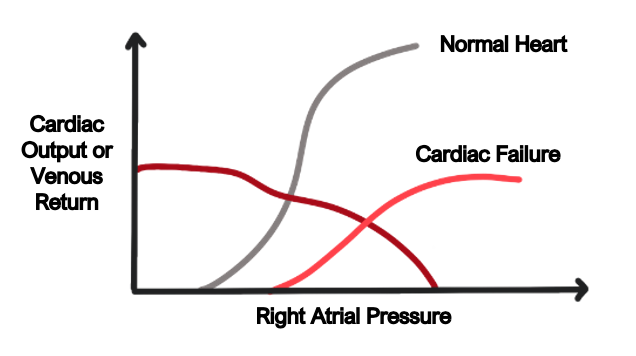
Blood supply
The blood supply to the heart is via coronary arteries, the first branches of the aorta.
– These are terminal end arteries and only fill during diastole.
– Therefore, anything which reduces the time of diastole reduces blood supply to the heart.
– Deoxygenated blood drains to the coronary sinus, which empties into the right atrium.




